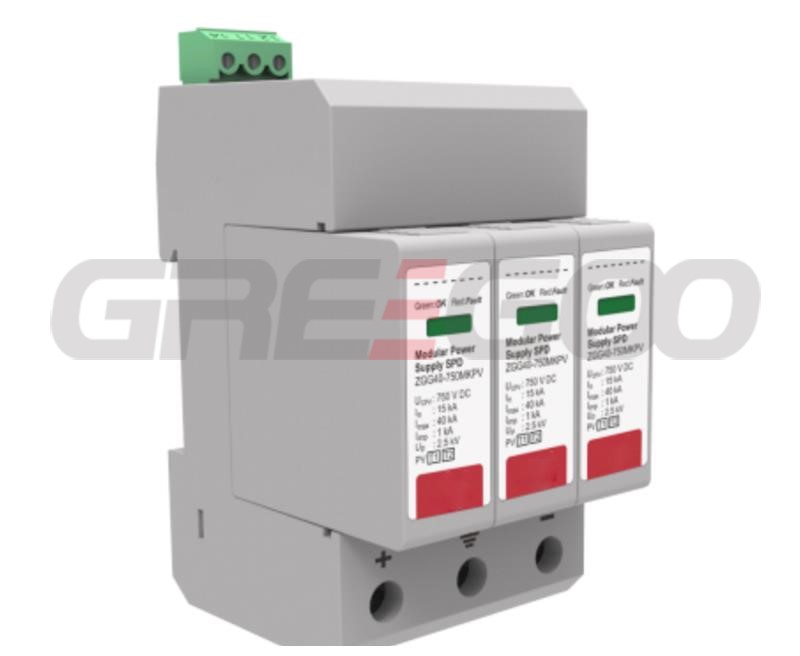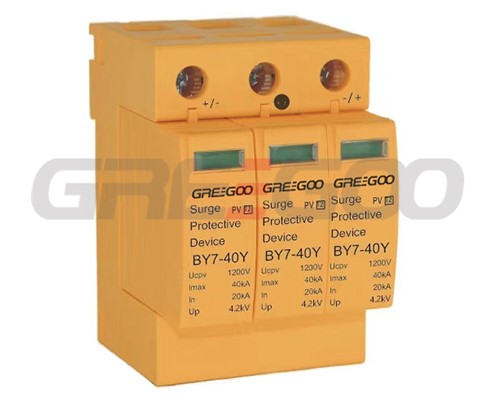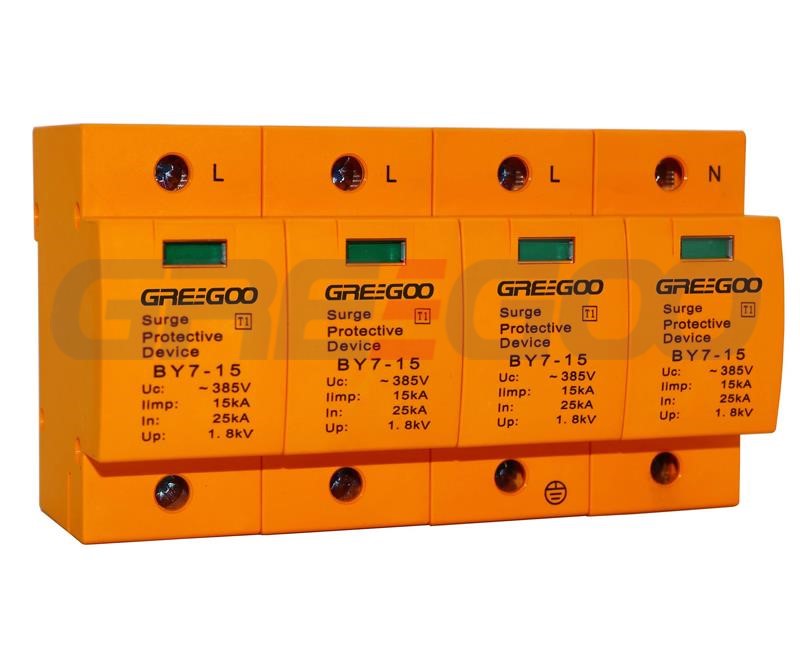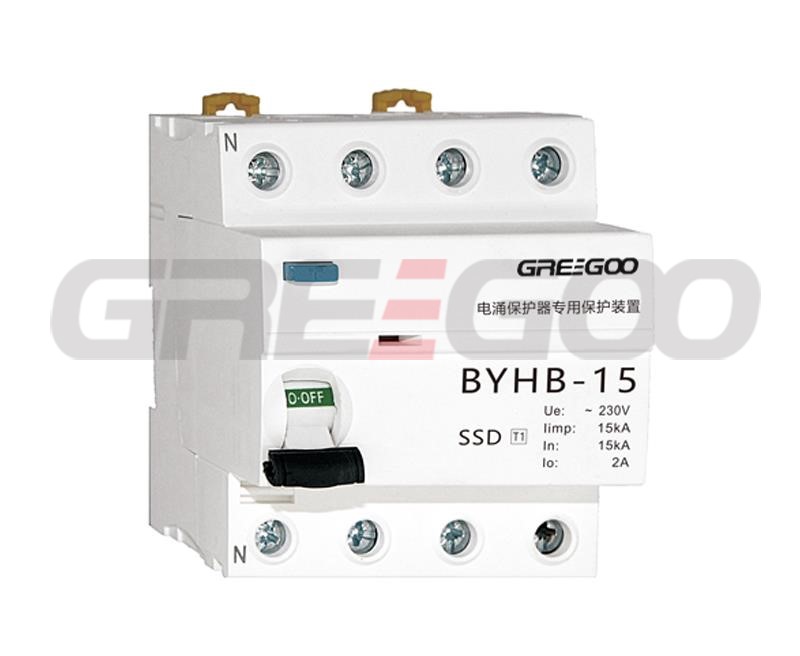Surge Protection Device
SPD (Surge Protection Device or called surge arrester) is an appliance designed to protect electrical devices from voltage spikes. A surge protector attempts to regulate the voltage supplied to an electric device by either blocking or by shorting to ground voltages above a safe threshold. We have spark gap, MOV and Spark tube type for different protection area.

What are the main differences between MOVs and Spark Gaps in SPDs? | What are the main differences between Type 1 and Type 2 SPD?
What are the main difference between 8/20μs and 10/350μs in SPD?

BY5-160 SPD Surge Arrester
160kA 3 phase surge protection device, L1,L2,L3 and L1,L2,L3,N.

BY5-120 SPD
120kA 3 phase surge protective device, spd.

BY7-100 SPD
100KA surge protection device

BY7-80 SPD
80KA SPD

BY7-60 SPD
60kA surge protective device.

BY7-40 SPD (VDE, UL, CB, CE, RoHs approved)
40kA SPD, CE, CB, RoHs, VDE and UL approved SPD.

BY7-20 SPD
20kA SPD, CE, CB, RoHs approval from Dekra.

BY7-10 SPD
10kA SPD, CE, CB, RoHs approval from Dekra.
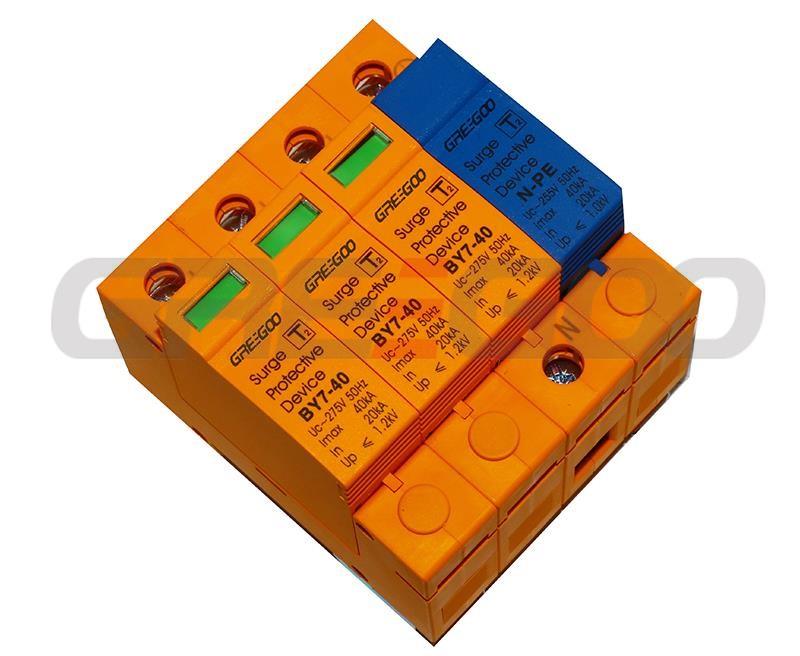
T2 BY7-40/3+1-385X surge protective device
40kA, 3+1, full protection, T2 zone.

BY7-40J Surge protection device
BY7-40J, CE, CB, ROHS

BYX-RJ11 SPD
BYX-RJ11

BYX-RJ45 SPD
BYX-RJ45

BYX-JZ SPD

BYX-DB SPD
RS232,RS485,RS422 SPD

BYT Coaxial surge protective devices
Coaxial signal surge protective devices

BYW Satellite TV SPD
Satellite TV high frequency, satellite signal receiver,microwave station and mobile communication station system.

BYX-BNC Coaxial Signal Lightning Protector

BYX-F Coaxial Signal Lightning Protector

BYX-RJ45 Network Signal Lightning Protector

BYX-JZ Terminal Signal Lightning Protector
Surge protector (SPD, Surge Protection Device) are devices used to protect electrical equipment from voltage surge damage. According to the IEC 61643-11 standard, surge protectors are divided into different types, mainly T1, T2, and T3, with the main differences being in their level of protection and installation location.
T1 Surge Protection Device:
- Also known as primary protection or level 1 protection.
- Designed to directly withstand high-energy impacts from distant power systems (such as lightning strikes directly on power lines).
- Typically installed at the building's service entrance panel, that is, where the main power line enters the building.
- T1 surge protectors are usually capable of handling surges with a 10/350 μs impulse waveform.
T2 Surge Protection Device:
- Also known as secondary protection or level 2 protection.
- Designed to protect electrical equipment from surges caused by switching operations and indirect effects of distant lightning strikes.
- Generally installed in sub-distribution panels, they can provide protection for a single or group of electrical devices.
- T2 surge protectors are usually capable of handling surges with an 8/20 μs impulse waveform.
T3 Surge Protection Device:
- Also known as tertiary protection or level 3 protection.
- Designed to protect sensitive electronic equipment from low-energy surges, which may be caused by internal switching operations or other disturbances within the building.
- Installed as close as possible to the protected equipment, often directly at the power supply point of the device or system.
The combination of T1, T2, and T3 surge protectors can provide a comprehensive protection system for an electrical installation, from the main service entrance to the individual sensitive devices.












